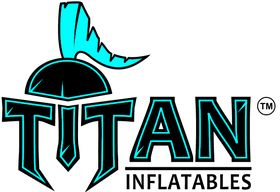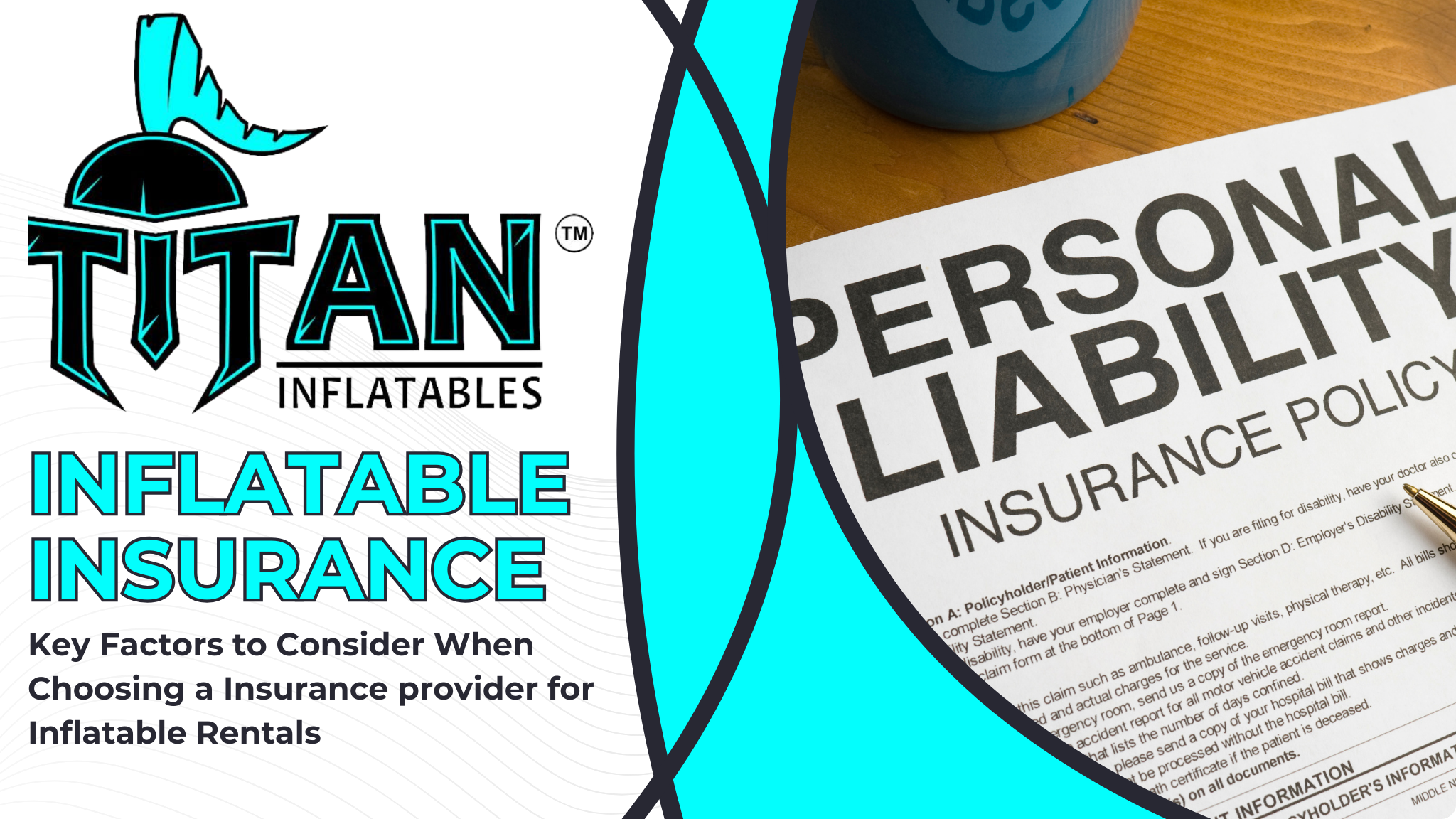The Importance of Insurance for Inflatable Rental Businesses
Key Factors to Consider When Choosing a Insurance provider for Inflatable Rentals
In this article, we will explore the crucial role insurance plays for inflatable rental businesses. From understanding the essential coverage types to evaluating the reliability of different insurance providers, our comprehensive guide aims to equip you with the knowledge needed to make informed decisions. We will delve into key considerations, including risk assessment, cost management, and legal compliance, ensuring that you can safeguard your business effectively while providing a safe and enjoyable experience for your clients.
Understanding Coverage Options and Exclusions
When choosing an insurance provider for Commercial inflatable rentals, it is crucial to thoroughly understand the various coverage options available to ensure comprehensive protection. General liability coverage is perhaps the most foundational, as it protects against claims of bodily injury and property damage that could occur during the use of inflatables. This is essential for mitigating the financial risks associated with accidents involving participants, bystanders, or property at events. Furthermore, product liability insurance is also vital, as it covers any potential defects or malfunctions in the inflatable units themselves, ensuring that the rental business is shielded from lawsuits resulting from such incidents.
In addition to liability coverage, it is important to consider property insurance for the inflatables and any associated equipment. Given the significant investment involved in purchasing high-quality inflatable units, property insurance can provide coverage for damages or losses resulting from theft, vandalism, or natural disasters. This type of insurance ensures that the business can promptly replace or repair damaged units without incurring substantial financial losses. Some providers offer policies that combine general liability, product liability, and property insurance, making it easier to manage and ensuring that all critical aspects of the business are covered.
Exclusions and policy limits are critical factors that must be meticulously evaluated when selecting an insurance provider. Exclusions are specific conditions or circumstances under which the policy will not pay out, and being aware of these can prevent unwelcome surprises in the event of a claim. For instance, some policies may exclude coverage for injuries resulting from the misuse of inflatable units or events held in high-risk environments. Understanding these exclusions allows rental businesses to take necessary precautions or seek additional coverage where needed. Similarly, policy limits— the maximum amount an insurer will pay out for a covered claim—should be carefully examined to ensure that they are sufficient to cover potential liabilities. By carefully assessing coverage options, exclusions, and policy limits, inflatable rental businesses can secure robust insurance protection tailored to their unique needs, providing peace of mind and safeguarding their operations.
Evaluating Insurance Providers: What to Look For
When evaluating insurance providers for inflatable rental businesses, it is essential to consider the provider's reputation and experience in the industry. A well-established provider with a strong track record of serving similar clients can offer valuable insights and tailored solutions that suit the unique needs of the inflatable rental sector. Researching customer reviews, testimonials, and case studies can provide a glimpse into the provider's reliability and effectiveness in processing claims and offering support. Additionally, seeking recommendations from industry peers or professional associations such as the NFIB can help identify trusted providers with a proven history of delivering comprehensive and responsive insurance services.
Another critical factor is the level of customer service and support offered by the insurance provider. The responsive and accessible support team is indispensable, especially when quick assistance is needed in the event of a claim or clarification regarding policy details. Look for providers that offer robust customer service options, including dedicated account managers, 24/7 support lines, and easy-to-access online resources. Comprehensive support can significantly ease the administrative burden on inflatable rental businesses and streamline the insurance management process. Personalized service that understands the specific nuances of the inflatable rental industry can also lead to more accurate risk assessments and bespoke coverage solutions.
Lastly, the flexibility of policy options and the ability to customise coverage to meet specific needs should not be overlooked. A one-size-fits-all approach to insurance may leave gaps in coverage or lead to unnecessary expenses. Instead, seek insurance providers that offer customizable policies, allowing businesses to add or exclude coverage options based on their operational requirements and risk profile. For instance, businesses operating in regions prone to natural disasters might prioritize coverage for weather-related damages, while others might need enhanced protection for high-value equipment. Flexibility in adjusting policy limits, deductibles, and additional riders can provide a more tailored and financially efficient insurance solution, ensuring comprehensive protection without overpaying for unnecessary coverage.
Buy From Manufacturers Who Carry Product Liability Insurance
Choosing to buy inflatables from manufacturers who carry product liability insurance is a prudent decision for rental businesses, as it ensures an added layer of protection against potential defects and malfunctions. Manufacturers with robust product liability insurance demonstrate a commitment to quality and responsibility, signifying that they stand behind their products and are prepared to address any issues that may arise. This insurance coverage can be a critical safeguard for rental businesses, as it allows them to recoup losses and cover legal costs if a product defect results in injury or property damage. By opting to purchase from insured manufacturers, rental businesses can minimize their risk exposure and focus on growing their operations with confidence.
Furthermore, manufacturers that invest in product liability insurance tend to have rigorous quality control and testing processes in place. This ensures that the inflatables they produce meet high safety and durability standards, reducing the likelihood of defects in the first place. For rental businesses, this translates to fewer instances of equipment failure or accidents, leading to enhanced customer satisfaction and repeat business. Working with manufacturers that prioritize safety and quality also facilitates smoother interactions and claims processes, should any issues arise. By aligning with reputable insured manufacturers, rental businesses can enhance their own reputations and build a loyal client base who trust their commitment to safety.
In addition to the inherent benefits of purchasing from insured manufacturers, this practice can also facilitate more favorable insurance premiums and terms for the rental business itself. Insurance providers often view businesses that source products from insured manufacturers as lower risk, as the liability is partly shared with the manufacturer. This can lead to reduced insurance costs, freeing up capital for the rental business to invest in other areas such as marketing, expansion, or equipment upgrades. Overall, prioritizing manufacturers with product liability insurance is a strategic move that not only provides essential protection but also fosters a safer, more reliable, and financially efficient business environment.
Steps to Filing a Claim for Inflatable Rentals
Filing a claim for inflatable rentals involves a well-defined process that ensures timely resolution and minimizes disruptions to your business operations. The first step in this process is to document the incident as thoroughly as possible. This includes taking detailed notes about what happened, when and where it occurred, and who was involved. Photographic evidence can also be invaluable, capturing any damages or injuries related to the incident. Having clear and comprehensive documentation will support your claim and help expedite the processing timeline.
The next important step is to notify your insurance provider as soon as possible. Prompt communication is crucial for a smooth claim process. Contact your provider through their designated claim reporting channels, which may include phone lines, email, or an online claims portal. When reporting the claim, provide all the necessary details and documentation gathered during the initial incident review. Be prepared to answer any follow-up questions the insurance adjuster may have, as this will further facilitate a quicker and more efficient claims process. Keeping a record of all interactions with your insurance provider can also be beneficial for future reference.
Finally, cooperate fully with the insurance adjuster assigned to your case. The adjuster’s role is to investigate the claim, assess the damage, and determine the appropriate amount of compensation. This may involve site visits, additional documentation requests, and interviews with involved parties. Being responsive and providing the required information promptly can significantly influence the resolution time and outcome of your claim. Additionally, it’s wise to review your insurance policy thoroughly to understand the coverage limits, exclusions, and any deductibles that apply. Being well-informed about your policy can help you manage expectations and ensure that you receive the maximum entitled benefit, allowing your business to recover swiftly and continue serving your clients effectively.

